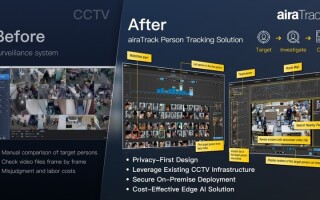By 2025, Over 7 Billion Antennas will be Shipped into IoT Devices, Creating Challenges for OEMs and Opportunities for Antenna Vendors
September 15, 2021
News

ABI Research’s recent whitepaper highlights the challenges of integrating antennas into IoT devices, and what OEMs can do to simplify their path to market.
By 2025, 7.2 billion antennas will be shipped for IoT devices - nearly three times what it is today. With new product launches and evolution of existing devices requiring multiple radios, smaller form factors, and greater device breadth, OEMs are increasingly challenged both at the design phase and when getting their products to market. A new whitepaper, Rethinking IoT Device Development with Virtual Antenna Technology, by tech market advisory firm ABI Research, highlights the challenges created by the small, yet critical, antenna component and the real-life impact it has on all IoT product design and certification processes.
“The antenna is one of the most common causes of failure when creating a new IoT product,” said Tancred Taylor, IoT Hardware & Devices Research Analyst at ABI Research. “The goal of any antenna in terms of choice and design is high performance for the application it serves, and the network and spectrum it operates on. The reality is much different. There are dozens of factors that impact real-life operating performance such as proximity to metal or the human body, interference from surrounding waves in RF-congested environments, obstruction from vehicular traffic or other objects, or detuning by other electronic components in a device. If the antenna is not designed and integrated properly at the beginning of the process, an OEM is very likely to encounter higher costs, delays, and even product failure at the certification stage.”
Increasingly, antenna vendors are required to work more collaboratively with their customers to limit the potential pitfalls of the process. The antenna is less and less seen as a standalone component, but as one that functions as part of a broader system. Offering software and services on top of the antenna component itself presents significant emerging opportunities for traditional component vendors, as RF engineering gains complexity from expanding network standards and accessible radio spectrum.
One antenna vendor taking a different approach to its incumbent competitors is Ignion, a Spanish company responsible for creating the Virtual Antenna, which has shipped over 25 million units through 2020. These wideband antennas work on all frequencies between 698-10,500MHz, and are tuned through the matching network. This technology shifts the focus of antenna integration from the antenna component itself to the comparatively simple matching network, which can significantly reduce complexity, antenna selection, and integration time for IoT devices. Ignion’s technology addresses the critical concerns of OEMs regarding RF design in IoT products.
For more information, read the whitepaper.





